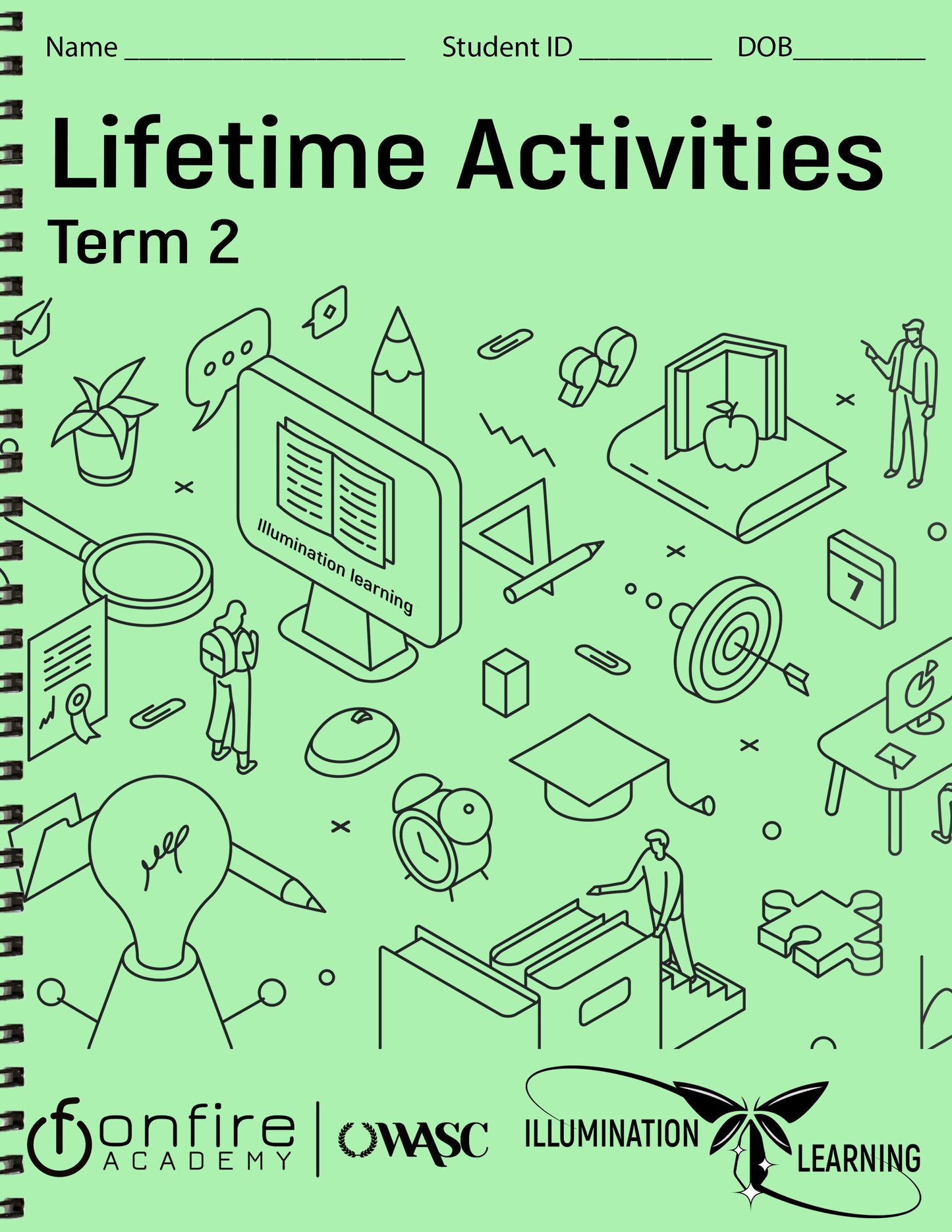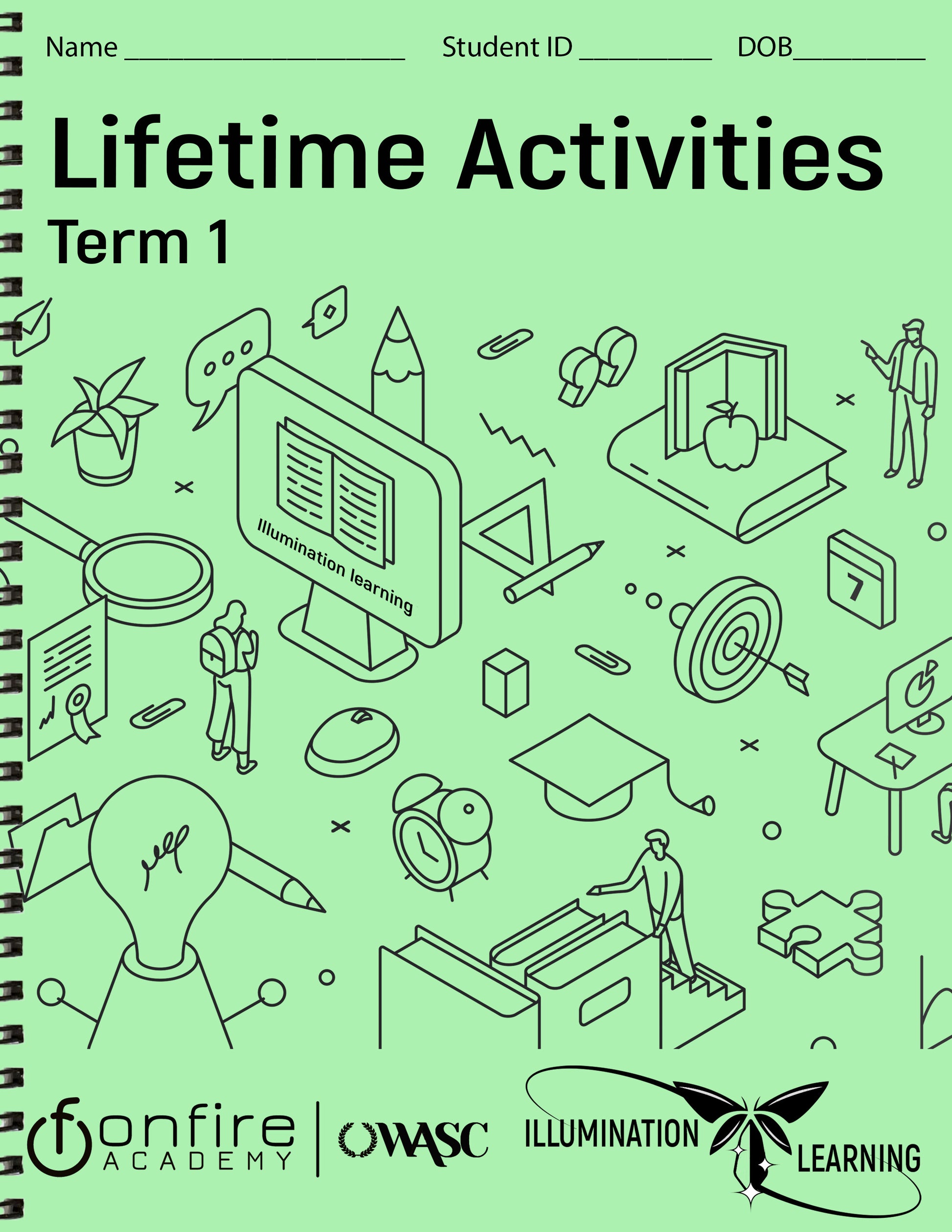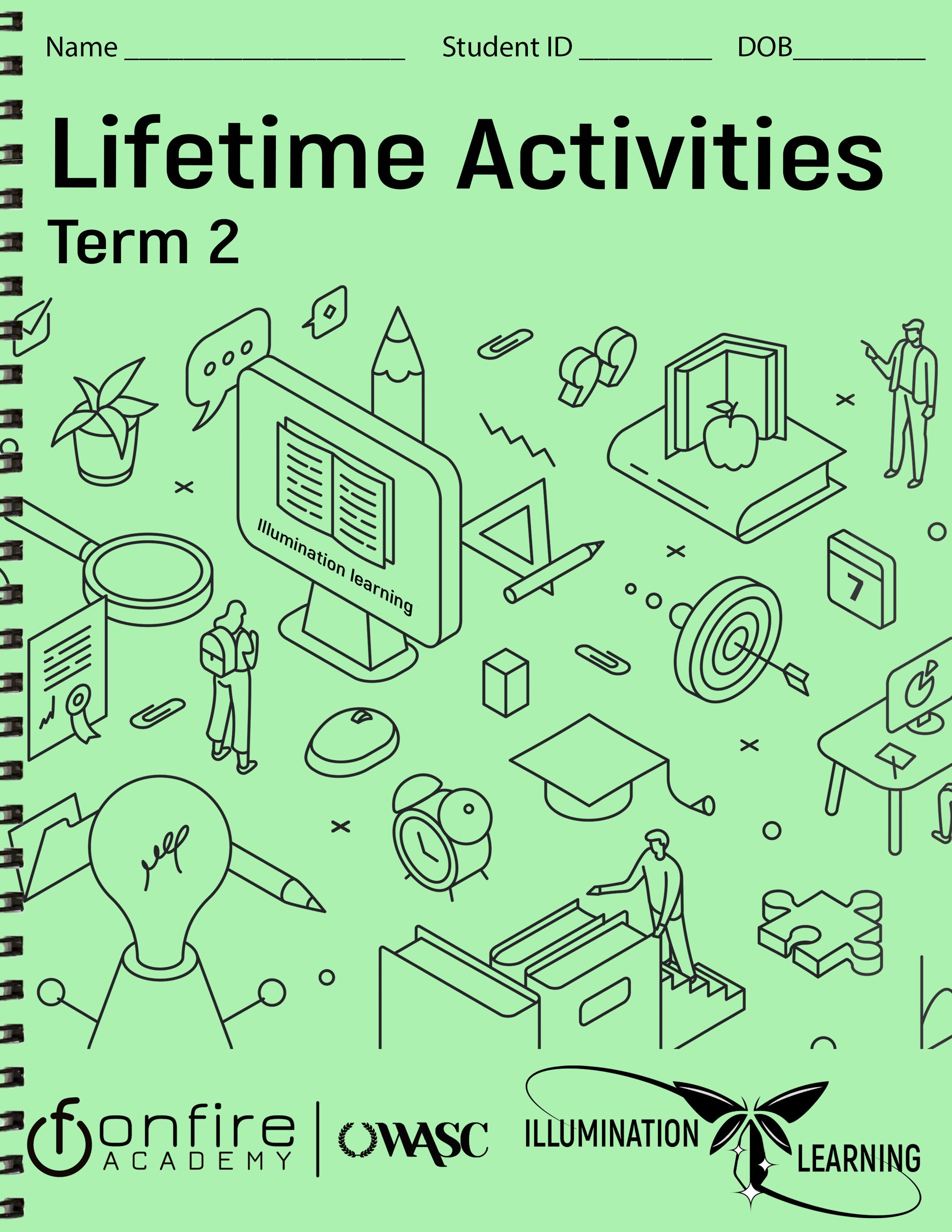ILLUMINATION LEARNING
Lifetime Activities 𝙃𝙤𝙢𝙚 𝙎𝙘𝙝𝙤𝙤𝙡
Lifetime Activities 𝙃𝙤𝙢𝙚 𝙎𝙘𝙝𝙤𝙤𝙡
Couldn't load pickup availability
Lifetime Activities – Terms 1 - 2 (sold separately)
This paper and pencil course introduces high school students to a variety of non-team and individual activities that promote lifelong fitness and enjoyment. Focused on helping students discover fun and accessible ways to stay active, the course encourages personal growth, independence, and a lifelong appreciation for movement and wellness.
Students explore a wide range of recreational activities including archery, badminton, golf, pickleball, tennis, disc golf, spikeball, walking, jogging, biking, fishing, martial arts, and aquatics. Instruction emphasizes skill development, safety, rules of play, and the physical and mental health benefits of each activity. Students are encouraged to set personal fitness goals and reflect on their progress throughout the course.
By the end of the course, students will have gained confidence in their ability to participate in a variety of fitness and leisure activities beyond the classroom. Lifetime Activities fosters a positive, flexible approach to staying active, empowering students to build healthy habits that can be sustained for years to come.
Click Here for a Sample Chapter!
_____________________________________________________________________________
Lifetime Activities 1
Chapter 1: Introduction to Lifetime Activities
1.1 What Are Lifetime Activities?
1.2 Key Characteristics of Lifetime Activities
1.3 Examples of Lifetime Activities
1.4 Benefits of Lifetime Activities
1.5 Adaptability and Inclusivity
1.6 Lifelong Wellness and Goal Setting
1.7 Written Questions
1.8 Fill-in-the-Blank Questions
1.9 Multiple Choice Questions
Chapter 2: Physical Health Benefits of Lifetime Activities
2.1 Cardiovascular Fitness
2.2 Muscle Strength and Endurance
2.3 Flexibility and Balance
2.4 Weight Management
2.5 Chronic Disease Prevention
2.6 Written Questions
2.7 Fill-in-the-Blank Questions
2.8 Multiple Choice Questions
Chapter 3: Mental and Emotional Benefits of Lifetime Activities
3.1 Stress Reduction
3.2 Mood Enhancement
3.3 Cognitive Benefits
3.4 Emotional Resilience and Confidence
3.5 Written Questions
3.6 Fill-in-the-Blank Questions
3.7 Multiple Choice Questions
Chapter 4: Social Benefits of Lifetime Activities
4.1 Relationship Building
4.2 Family Bonding
4.3 Community Engagement
4.4 Combating Loneliness and Isolation
4.5 Written Questions
4.6 Fill-in-the-Blank Questions
4.7 Multiple Choice Questions
Chapter 5: Developing a Lifetime Activities Plan
5.1 Assessing Personal Interests and Goals
5.2 Choosing Suitable Activities
5.3 Setting Realistic Objectives
5.4 Planning for Consistency and Flexibility
5.5 Tracking Progress
5.6 Written Questions
5.7 Fill-in-the-Blank Questions
5.8 Multiple Choice Questions
________________________________________________________________
Lifetime Activities 2
Chapter 1: Understanding Lifetime Activities
1.1 What Are Lifetime Activities?
1.2 Benefits of Lifetime Activities
1.3 Types of Lifetime Activities
1.4 Choosing the Right Activity
1.5 Reflection and Planning
1.6 Written Questions
1.7 Multiple Choice Questions
Chapter 2: Safety in Lifetime Activities
2.1 General Safety Guidelines
2.2 Warm-Ups and Cool-Downs
2.3 Hydration
2.4 First Aid Basics
2.5 Knowing Your Limits
2.6 Safety for Specific Activities
2.7 Injury Prevention and Response
2.8 Written Questions
2.9 Multiple Choice Questions
Chapter 3: Etiquette and Rules in Lifetime Activities
3.1 Why Etiquette Matters
3.2 Etiquette for Different Activities
3.3 Understanding Rules
3.4 Written Questions
3.5 Multiple Choice Questions
Chapter 4: Creating a Personalized Activity Plan
4.1 Why Create a Personalized Plan?
4.2 Steps to Building a Plan
4.3 Weekly and Monthly Schedules
4.4 Balancing Activities with Daily Life
4.5 Personalized Plan Examples
4.6 Written Questions
4.7 Multiple Choice Questions
Chapter 5: Goal Setting and Tracking Progress
5.1 Importance of Goal Setting
5.2 SMART Goals
5.3 Tracking Tools
5.4 Adapting Goals Over Time
5.5 Goal-Setting Workshop
5.6 Written Questions
5.7 Multiple Choice Questions
Chapter 6: Overcoming Challenges and Staying Motivated
6.1 Common Challenges and Solutions
6.2 Staying Inspired
6.3 Written Questions
6.4 Multiple Choice Questions
Chapter 7: Lifelong Adaptation of Activities
7.1 Modifying Activities by Age
7.2 Injury Recovery and Adaptation
7.3 Staying Active Through Life Changes
7.4 Written Questions
7.5 Multiple Choice Questions
Share



